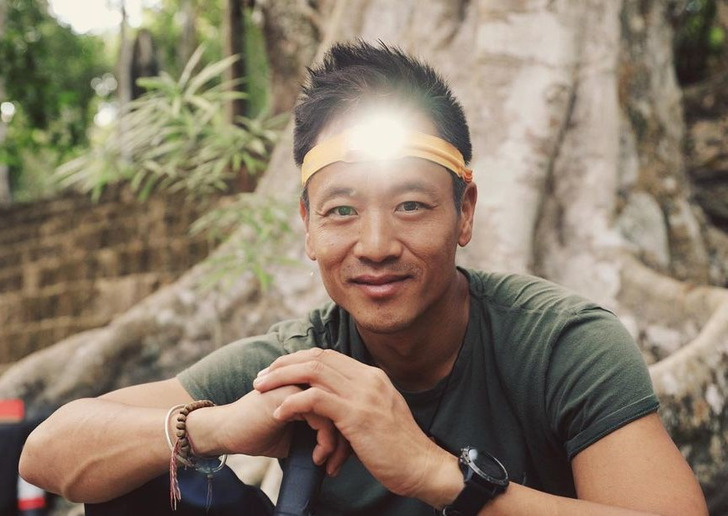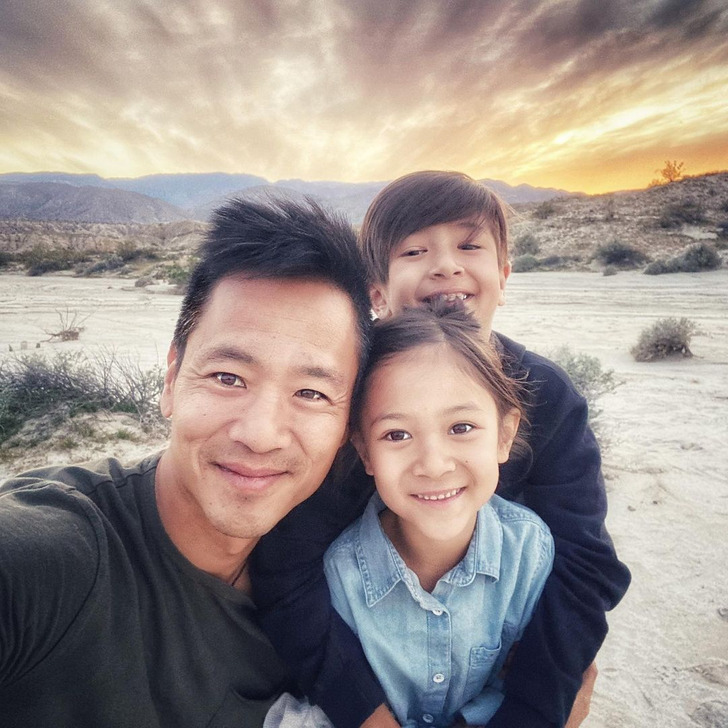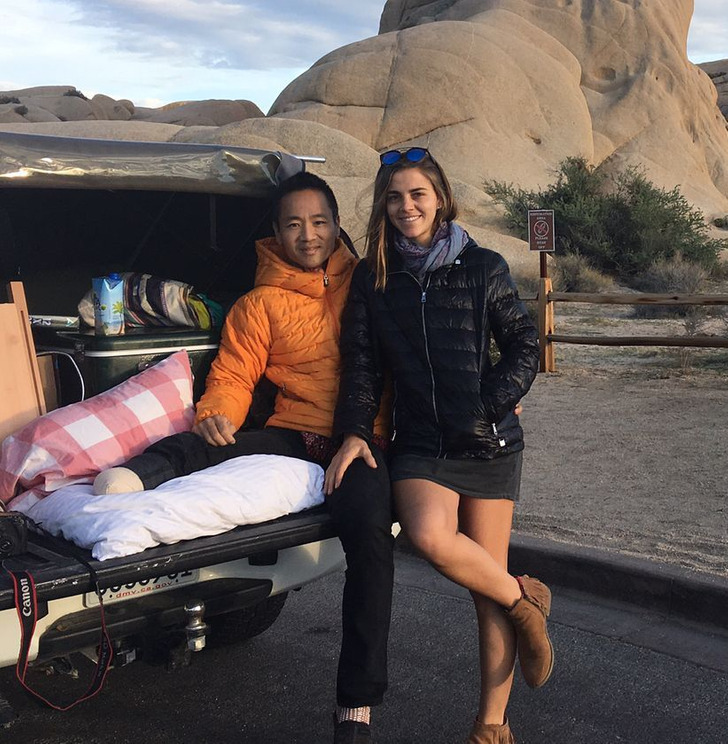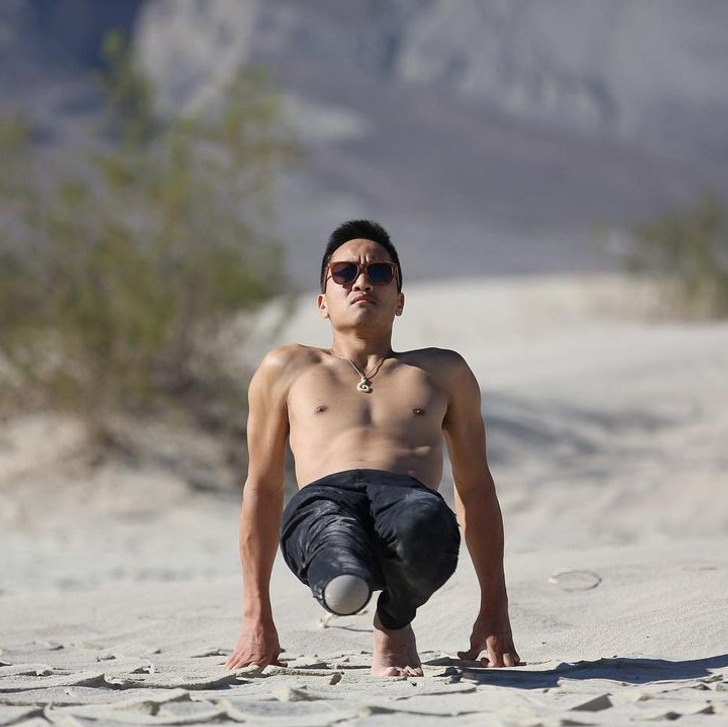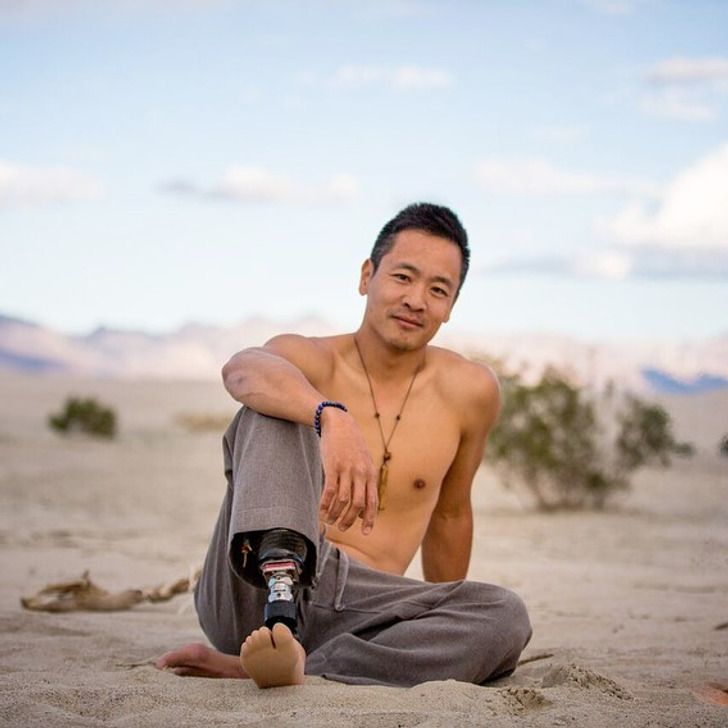Explorer Albert Lin Lost His Leg, But Turned the Experience Into a Love Story and a New Beginning
Albert Lin has a middle name, Yu-Min, which translates to “Citizen of the Universe.” The name seems to have predetermined Albert’s purpose: he is an explorer, engineer, scientist, artist, surfer, humanist, and traveler. His passion for adventures didn’t stop even after he lost his leg and had to do a very long rehabilitation period.
He became National Geographic’s Adventurer of the Year
Albert Lin was born on March 22, 1981, in San Diego. His mother moved to the US from Hong Kong, where she was an actress, and his father was an astrophysicist. He traveled a lot and often took his son with him, which helped Albert discover his own interest in science and adventures. After school, he earned his BS and M.Sci degrees in Mechanical and Aerospace Engineering from UC San Diego.
When he was a student, Albert often went to different countries for holidays, and when he finished his education, he went to Mongolia to search for Khan’s final resting place. To find this historical site, he used all the modern technology, including satellites and drones. The tomb was never found, but Albert attracted lots of attention thanks to his unusual methods. In 2009, he was named National Geographic’s Adventurer of the Year, and since 2011, the channel has broadcasted a series of Albert’s expeditions.
He got in an accident that changed his entire life
In September 2016, Lin’s life changed a lot. Together with his friend, he went on a safe trip in California. They decided to drive off-road in a small 4×4 vehicle near Poway, and the driver lost control. Albert tried to do everything not to let the car roll, but as a result, his leg was injured. It all happened in a matter of seconds.
Lin spent a month in a hospital, fighting infections that were in his shattered bones. The situation was so serious that Albert had to make a tough decision and have his leg amputated below the knee. In these circumstances, Albert remained positive and decided to move on instead of worrying over something that couldn’t be saved.
During the first days after accident, he realized he had met his true love
When this whole thing happened, Lin was not just a scientist, explorer, and adventurer, but also a father of 2 wonderful children. Albert had a son and daughter from his previous marriage. The kids supported their father during this tough time. But his kids were not the only ones who were there for him.
Around a week before the tragic accident, Albert had started dating Bruna Bortola. His new girlfriend became a source of calm during the following difficult times. When the crash happened, she arrived to support him just an hour after the incident while he was waiting for the doctors. She put him through a deep meditation to help relieve the stress and pain. She never left his side at the hospital. Since then, Albert and Bruna have been inseparable. His loss story is also a love story.
He reconsidered everything he thought was insignificant
A new life started for Lin after he lost his leg. He had to readjust to simple things that had once seemed insignificant. Such simple things as carrying a glass of water from one end of the room to another, using the bathroom on his own, or getting a book from the top shelf became tasks that required a lot of time to solve.
But these new difficulties were not his biggest challenge. The worst part was the phantom limb pain. Traditional medicine didn’t help, so Albert and his girlfriend started going to the desert, relying on their minds and concentration to control what he felt.
But the true solution was found when Lin asked his colleagues at UC San Diego for help. Psychology professor V.S. Ramachandran, a leading expert in phantom limb pain, is the author of the acclaimed book Phantoms in the Brain. He suggested mirror therapy. It can significantly reduce chronic pain and phantom limb pain by showing a patient a reflection of his or her painful body part.
He fights for affordable prosthetics for people all around the world
Some time later, Lin ordered a high-tech prosthetic leg, which has allowed him to continue to lead and participate in extremely physically demanding expeditions. It also made him realize that he was able to handle the process of getting the prosthetic so easily because he had access to the experts at UC San Diego, plus additional modern medical help. But there are millions of other people with amputated limbs that don’t have such opportunities, so he decided to fight to give them better access.
Albert founded the Center for Human Frontiers and decided to use accessible tech in an ongoing quest to improve human potential. One of their initiatives is to create affordable prosthetics for people all around the world. Lin’s center is developing a mobile app that can capture and send photos of an amputee’s residual limb to a 3D printer in order to make a custom-fit prosthetic.
3D printers make creating prosthetics faster and more affordable, cutting down on the number of trips patients have to make to the hospitable to get their new limb fitted. These things can become the decisive factors for survival and a comfortable life.
He enjoys his adventures no matter what
If you’ve seen a show with Albert on National Geographic, you’ve probably noticed his endless optimism, curiosity, and the energy he has for exploring the secrets of our planet. Losing his leg didn’t limit his ambitions. As soon as he got his prosthetic leg, he returned to his expeditions. In 2018, his show Lost Treasures of the Maya was released, and his series Lost Cities with Albert Lin and Welcome to Earth have been running since 2019.
On top of that, Albert shares the photos from his expeditions on his Instagram page. Lin surfs in the ocean, explores the rocks, and enjoys the picturesque canyons. With his example, Albert shows that no matter how depressing a loss is, it can be a starting point for personal growth, rethinking life, and starting projects you had never thought of before.
What shows with Albert Lin have you watched?
